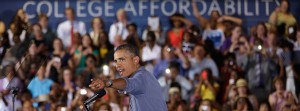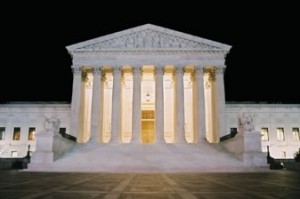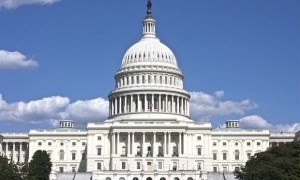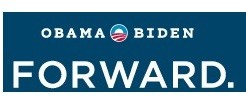 This week President Obama outlined a new series of proposals to help Americans deal with the rising price of college. Addressing college costs has been a priority of the president’s from early on in his first term, but this is probably the most comprehensive set of proposals that have been released at one time. He described them on a two-day, two-state bus tour of college campuses.
This week President Obama outlined a new series of proposals to help Americans deal with the rising price of college. Addressing college costs has been a priority of the president’s from early on in his first term, but this is probably the most comprehensive set of proposals that have been released at one time. He described them on a two-day, two-state bus tour of college campuses.
There is a lot packaged in the president’s proposals, and in the next couple of blog posts I will provide analysis of some of the key pieces. The proposals fall under three main topics:
- Provide incentives for both higher education institutions and students to link financial aid to performance;
- Encourage innovation on the part of colleges and universities to come up with new pathways toward less expensive degrees and provide better information to students and parents; and
- Make loan debt more manageable for those who borrowed to pay for college.
Continue reading “More from President Obama on college costs (Part 1)”




 Last summer, I wrote a
Last summer, I wrote a  The presidential election is less than a month away, and the candidates are gearing up for the final push. As most observers expected, the economy has dominated much of the political discourse. But other topics have crept into the campaigns, including education.
The presidential election is less than a month away, and the candidates are gearing up for the final push. As most observers expected, the economy has dominated much of the political discourse. But other topics have crept into the campaigns, including education. cation Arne Duncan’s Race to the Top program. President Obama, not surprisingly, also touted the Race to the Top program, as well as other initiatives his Department of Education and administration had put into place, including steps to try to control the growth in tuition prices across the country.
cation Arne Duncan’s Race to the Top program. President Obama, not surprisingly, also touted the Race to the Top program, as well as other initiatives his Department of Education and administration had put into place, including steps to try to control the growth in tuition prices across the country.